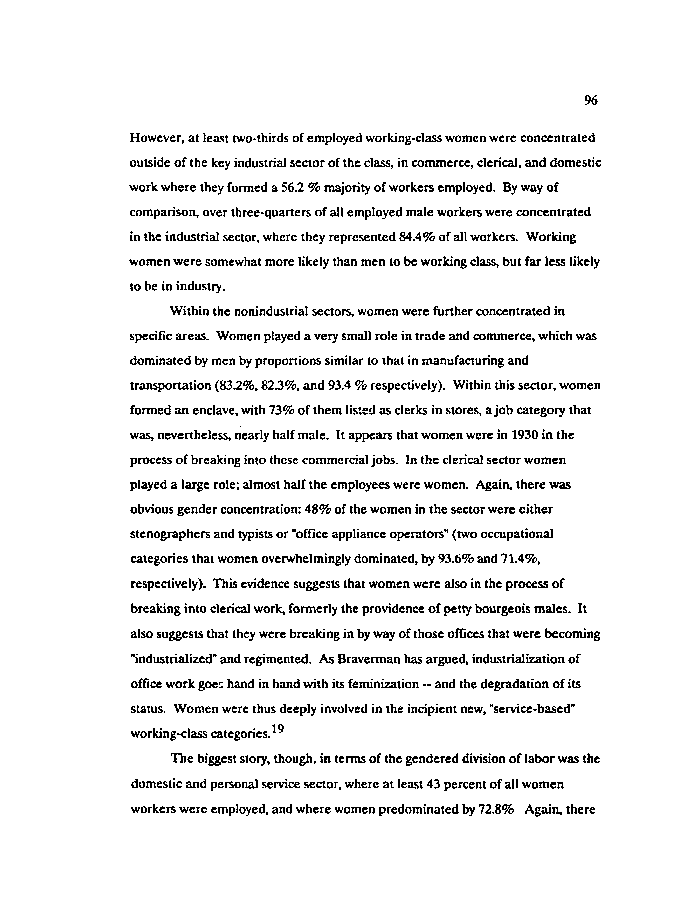|
96
However, at least two-thirds of employed working-class women were concentrated
outside of the key industrial sector of the class, in commerce, clerical, and domestic
work where they formed a 56.2 % majority of workers employed. By way of
comparison, over three-quarters of all employed male workers were concentrated
in the industrial sector, where they represented 84.4% of all workers. Working
women were somewhat more likely than men to be working class, but far less likely
to be in industry.
Within the nonindustrial sectors, women were further concentrated in
specific areas. Women played a very small role in trade and commerce, which was
dominated by men by proportions similar to that in manufacturing and
transportation (83.2%, 823%, and 93.4 % respectively). Within this sector, women
formed an enclave, with 73% of them listed as clerks in stores, a job category that
was, nevertheless, nearly half male. It appears that women were in 1930 in the
process of breaking into these commercial jobs. In the clerical sector women
played a large role; almost half the employees were women. Again, there was
obvious gender concentration: 48% of the women in the sector were cither
stenographers and typists or "office appliance operators" (two occupational
categories that women overwhelmingly dominated, by 93.6% and 71.4%,
respectively). This evidence suggests that women were also in the process of
breaking into clerical work, formerly the providence of petty bourgeois males. It
also suggests that they were breaking in by way of those offices that were becoming
"industrialized" and regimented. As Braverman has argued, industrialization of
office work goes hand in hand with its feminization - and the degradation of its
status. Women were thus deeply involved in the incipient new, "service-based"
working-class categories.^
The biggest story, though, in terms of the gendered division of labor was the
domestic and personal service sector, where at least 43 percent of all women
workers were employed, and where women predominated by 72.8% Again, there
|

